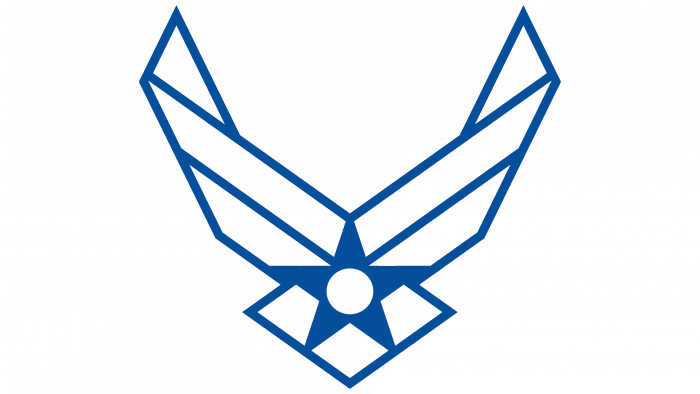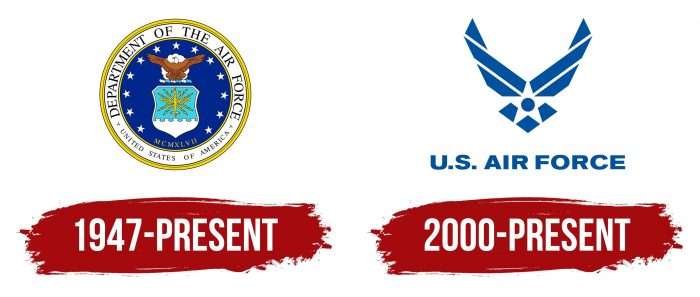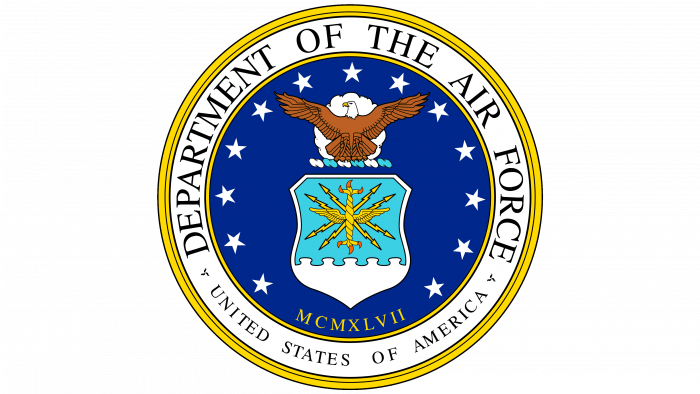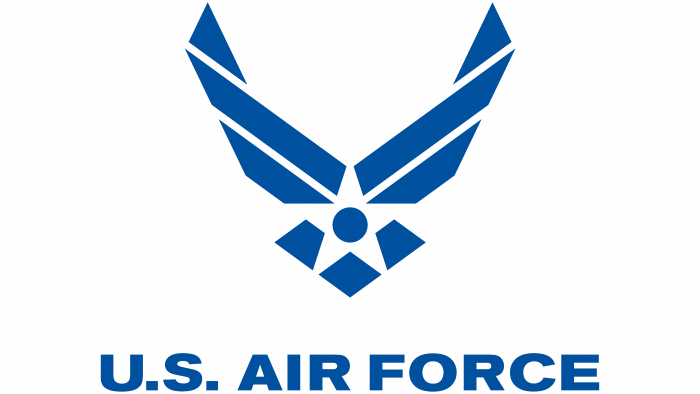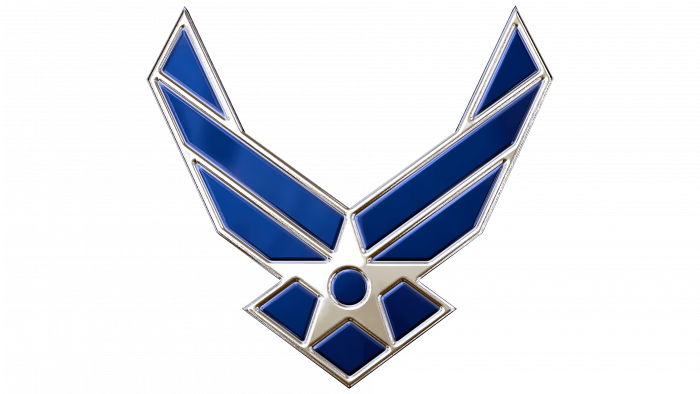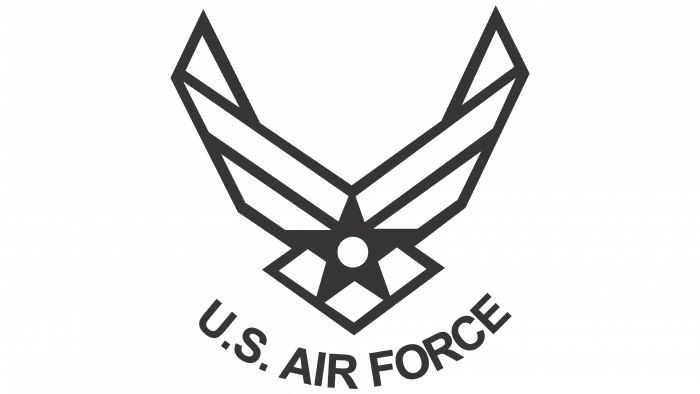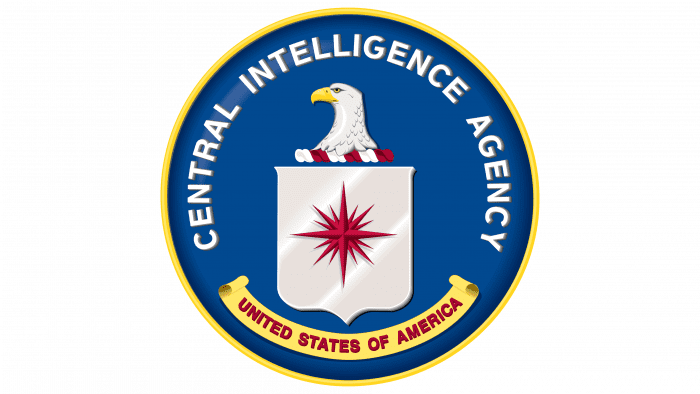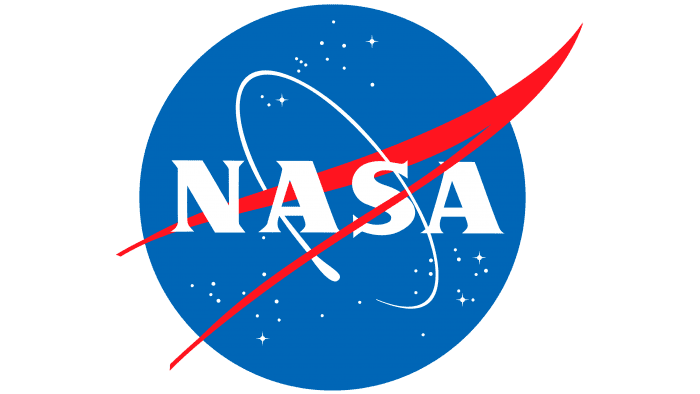The emblem’s main message is the reward for victories in the sky. The Air Force logo is inspired by courage, purposefulness, and bravery. It promises recognition of services to the Motherland. The symbols hint at air space and sky blue.
Air Force: Brand overview
Meaning and History
The priorities, tasks, and goals of the Air Force are reflected in its emblems. It has two: one as an identification mark on chevrons, a flag, and other paraphernalia; the second is the official logo, approved in January 2000.
The story of its appearance began with the fact that in the late 90s of the last century, the United States Air Force’s main headquarters addressed a commercial company to research and create unique symbols. The corporate branding firm dispatched representatives to major cities and military sites to learn about employee values, conduct analysis, and get up close and personal with the situation. The studio staff traveled to the military air points for a long time and studied the military’s environment, culture, and heritage.
The detailed work resulted in a truly original sign. The updated logo is based on traditional military values and reflects historical traditions. The proposed design emphasizes the service’s current and future capabilities to protect US airspace and the country’s interests.
The work took place in several stages. In 1998, initial surveys and collaboration with a focus group took place. A year later, a graphic symbol was introduced. This was the prototype for the Air Force emblem in black and white. In the late spring of 2000, the authors applied for trademark registration, and in 2001, it was tested on all military personnel.
After a survey conducted in 2002, the target audience noted that most of its representatives (90%) identify the symbol as an official USAF mark. In the first half of autumn 2003, he received registration and serial numbers, and in May 2004, he was officially approved by the chief of staff.
What is Air Force?
Air Force is an air force. In the United States, it is one of the youngest branches of the armed forces, formed in 1947 as a separate unit. It provides air support for naval and ground forces.
1947 – today
The general logo of the Department of Defense Department looks like a round stamp. The rondel consists of a central circle with a wide edging along the edge, in which the full name of the military service is written. In the center is the bald eagle, the symbol of the United States. He is also depicted in the style of Cubism on a new symbol. The old emblem was used in the early days when the Air Force was part of the army.
2000 – today
The modern legendary soaring bird symbol, the prototype associated with Air Force General Henry Harley Arnold, is a legacy dating back to World War II. The logo is practically assembled from many geometric shapes: trapezoids, triangles, rhombuses, circles, and parallelograms with one cut-off side. Arranged in a certain way, they form the figure of a bald eagle flapping powerful wings.
There is a five-pointed star in the center of the emblem. It appeared at the expense of negative space – on the contrast of color and straight lines. A blue circle is visible in the middle, from which white rays diverge in different directions. Below is the inscription “U. S. Air Force. ”
Air Force: Interesting Facts
The United States Air Force (USAF) plays a key role in the country’s defense and has made significant marks in history through innovation and bravery.
- Becoming Independent: The Air Force was part of the Army until September 18, 1947, when it became its branch under the National Security Act of 1947.
- Worldwide Operations: With bases around the globe, the USAF demonstrates the critical role of air power in today’s military strategies.
- Space and Cyberspace Roles: The Air Force has been deeply involved in space and cyberspace, leading space operations before the U.S. Space Force was established in 2019.
- Technological Leadership: Known as the most advanced air force worldwide, it boasts a fleet that includes stealth fighters, drones, and other cutting-edge aircraft.
- Humanitarian Efforts: In addition to military defense, the Air Force undertakes humanitarian missions, offering relief and support during global disasters and crises.
- Women in the Air Force: The USAF has been progressive in welcoming women into combat and flight roles, with Jeannie Leavitt becoming its first female fighter pilot in 1993.
- Air Force Academy: Founded in 1954, this prestigious institution in Colorado Springs trains and educates officers for the Air Force, blending military training with academic study.
- Nuclear Deterrence: The USAF plays a crucial role in strategic nuclear deterrence, operating nuclear-capable bombers and ICBMs.
- Aviation Innovations: The Air Force is at the forefront of aerospace technology, having developed iconic aircraft like the U-2 spy plane and the SR-71 Blackbird.
- Air Force One: Any plane carrying the President is called “Air Force One.” These planes symbolize American leadership and the Air Force’s high standards.
The USAF is vital for national security, space exploration, and pushing the boundaries of aviation technology, highlighting its significance in advancing military and aerospace achievements.
Font and Colors
This military service has two logos—general and individual. Although they are made in different styles, they are connected by the main symbol of the United States—the bald eagle. The first version is classic and close to realism; the second is improvised and resembles Cubism.
The logo’s lettering is almost identical to the Craft Gothic Heavy Extended typeface created by FontSite Inc. It is bold, wide, large, stocky, and sans serif. The military unit associated with flights has a color scheme that is naturally heavenly, so blue, in combination with a white background, prevails in the corporate palette.
FAQ
What color is the Air Force?
The main colors are ultramarine blue and gold. Ultramarine blue symbolizes the sky, and gold signifies perfection and high achievements. These colors are important in the Great Seal. They reflect the Air Force’s heritage and core values, illustrating its evolution and ongoing mission to achieve excellence in the airspace.
What is the new Air Force symbol?
The new symbol is inspired by Henry H. Arnold’s (“Hap Arnold”) wings from World War II. Arnold’s “Hap” wings were an emblem during World War II, symbolizing strength, courage, and innovation.
The new symbol uses these wings to show respect for the past and symbolize the core mission of air dominance, global reach, and rapid mobility. They signify the dedication, excellence, and high standards expected of all organization personnel. The new symbol honors the accomplishments and sacrifices of those who have served before and inspires current and future members.
What do the three diamonds on the Air Force symbol represent?
The three diamonds on the organization’s symbol represent the core values: integrity first, service before self, and excellence in all we do:
- Integrity first means being honest and having strong moral principles.
- Service before self means placing the mission and well-being of others above self-interest.
- Excellence in all we do means striving for high standards in every task.
These diamonds, framing the star of the symbol, remind all members to adhere to these principles in all aspects of their service.
What is the Air Force logo called?
The modern logo is called Arnold’s Wings. The symbol dates back to World War II, when it was known as the “Hap” in honor of General Henry “Hap” Arnold, an important figure in the organization’s history. General Arnold was a key leader during the war and helped elevate the Air Force.
Arnold’s wings represent strength, courage, and innovation. The design pays tribute to General Arnold’s contributions and the values he stood for. The use of wings in the logo connects current troops to their past, demonstrating a commitment to excellence, service, and integrity.
Who designed the Air Force emblem?
The U.S. Air Force emblem is based on the World War II “Hap” logo, named after General Henry “Hap” Arnold, who played a key role in the Air Force’s history. The modern version of the emblem was created by a commercial company whose name has not been disclosed. This design maintains the original heritage while reflecting the Air Force’s values and mission.
The design honors the past and symbolizes the core values of integrity first, service before self, and excellence in all we do. Using the historic Hap logo elements, the new emblem connects the Air Force’s history with its future.
Is the Air Force logo copyrighted?
Yes, the logo is protected by license and copyright. Its trademarks are protected by law, and unauthorized use is strictly prohibited. The brand controls its logos and receives revenue from products bearing those trademarks. This protection ensures correct use and maintains brand integrity.
Only the Air Force can authorize and control the use of its logos. This ensures brand consistency and that products or materials bearing the logo meet brand standards. Unauthorized use may result in legal action to protect the brand’s intellectual property.
What is the Air Force motto?
The US Air Force motto is “Fly, Fight, and Win.” This motto reflects the Air Force’s mission and emphasizes the ability to fly aircraft, engage in combat, and achieve victory anywhere.
“Fly” shows the role of aircraft operation in protecting and serving the nation. “Fight” means being ready to engage in combat when necessary. “Win” emphasizes the desire to succeed in every mission. This motto reflects the Air Force’s core purpose and commitment to excel in its responsibilities.
